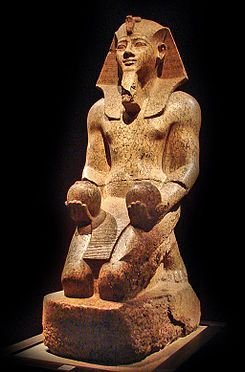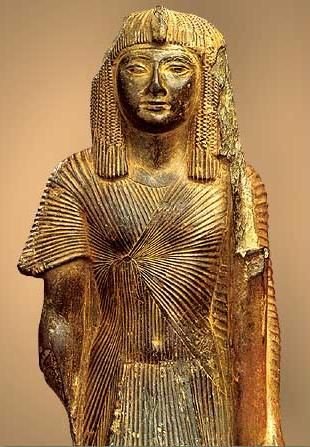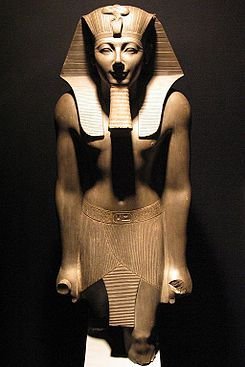Famous pharaohs
Around the year 1000 before Christ the priests of ammon gathered all the royal mummies whose tombs had been looted and buried in other hiding places. They deposited 13 in the tomb of amenhotep II, and 40 in the tomb at a risk of deir el -bahri. The pharaohs lay there in peace until they discovered explorers in the nineteenth century thanks to this finding we can still see the faces of some rulers in antiquity and compare them with their statues. Among these pharaohs are:
tutmosis:
Thutmose III was the son of King Thutmose II and a royal concubine of the name Isis. This woman did not even have the title of secondary wife, reason why the possibilities of the prince to arrive at king would have been null had not died its father without male descendants of the Great Real Hatshepsut Wife.The royal tradition during the XVIII Dynasty, stipulated that the succession would be privilege of the male. This prince had to be fruit of the relation of the ruling pharaoh and the Great Royal Bride, who held the position of Dadora of Inheritors and successor of the mythical queen Ahmose-Nefertari. Tuthmosis III was crowned, but he was too young to assume the state government. For this reason, Queen Hatshepsut (who was a descendant of kings and queens on both sides) was in charge of the regency, removing definitively the vizier Ineni, the influential courtier who perhaps was behind the rise of Thutmose II and Thutmose III to the detriment of Queen.
amenhotep II :
Son of Tuthmosis III and Meritra Hatshepsut, he pursued his father's expansionist policy with excellent results, expanding and stabilizing the dominions of Egypt in Syria and Nubia, reaching the country its maximum extension. Known as the "king athlete", his reign was a complete continuity of that of his father. At his death, he was succeeded by his son Tuthmosis IV, born of a secondary wife, named Tiaa. No woman of Amenophis II is known to occupy the title of great royal wife. Many of the sons of this pharaoh have come: Ahmose, Iaret, Uebensenu, Jaemuaset, Amenhotep ... His tomb (KV35) is in the Valley of the Kings and is in good condition. Its discovery in 1898 was an important milestone in the history of Egyptology, as it contained other royal mummies that were saved from tomb robbers. Among the distinguished guests, whose remains now lie in the Cairo Museum, are found, apart from Amenofis II himself, the kings Tuthmosis IV, Amenofis III, Seti II, Siptah or Queen Tiye, among others.

seti I:
He was a military man, like his father, born in the Nile Delta region in the Avaris area. Its name comes from Seth, the god of war, of arms and army, to which Seti I served as a priest before being soldier. Not much is known of the youth of Seti I, but yes about his reign. When his father became Vizier of Horemheb and later in Pharaoh, he was soon associated with the throne, but by then he was of mature age. In his first year in office alone, he launched himself into the reckless conquest of Palestine, Syria and Phenicia, which had gained their independence during the reign of Akhenaten or had been conquered by the fearsome Hittites, traditional enemies of Egypt. The campaigns of Seti by the south of these territories were a resounding success, without equal since the times of Tutmosis III and Amenhotep II, but did not dare to go further north by the advance of the hitita dominion.

Ramses el grande:
Ramses II was the son of Pharaoh Seti I and his Royal Wife, Tuya. It was not, as is sometimes assumed, an only child; It is known that he had at least two sisters and, apparently, a brother named Nebchasetnebet, who died before reaching adulthood, reason why Rameses automatically became the heir. As a child he lived as a member of a military family.4 Seti I appointed Ramses as co-regent when he was about fourteen years old, and was intensively trained by Pharaoh himself and by several masters of the arts and sciences.5 The corregencia Lasted between three and seven years, there are no reliable sources on this subject. At the age of fifteen or sixteen, Ramses already had authority over the army, and inscriptions from that time and again describe him as a "clever young leader." By that time he was already married and fathered four children.


Congratulations @lipani23! You received a personal award!
Click here to view your Board
Congratulations @lipani23! You received a personal award!
You can view your badges on your Steem Board and compare to others on the Steem Ranking
Vote for @Steemitboard as a witness to get one more award and increased upvotes!